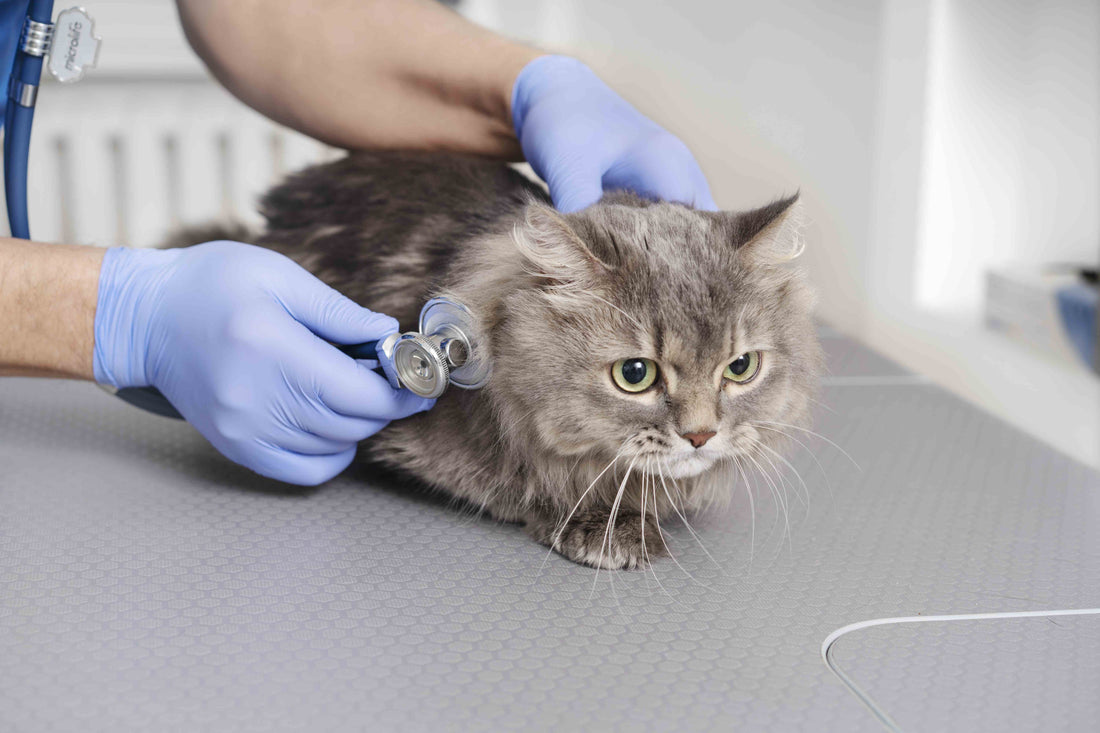5 Common Health Problems in Senior Cats — What Every Pet Parent Should Know

As our feline friends grow older, their organs begin to wear down and cell renewal slows — just like in humans. Aging is a natural process, but with better nutrition, medical care, and attentive owners, more cats are living long, fulfilling lives.
At Petsgofun, we believe understanding your cat’s health at every stage is the key to giving them a longer, happier life. Once your cat reaches the age of seven, they officially enter the “mature” stage — and that’s when age-related diseases can quietly begin to appear.
Let’s take a closer look at the five most common health problems in senior cats and how you can help your furry friend stay healthy and comfortable.
1. Cardiovascular System: Heart Disease & High Blood Pressure
The heart works tirelessly every day — even while your cat sleeps. As it ages, the heart’s function gradually declines, leading to potential issues such as heart disease or hypertension.
Common warning signs include:
- Weakness or fatigue
- Shortness of breath
- Sudden paralysis or pain in the hind limbs (often caused by blood clots)
If you notice any of these, see your veterinarian immediately.
2. Urinary Tract System: Chronic Kidney Disease
Cats are naturally poor drinkers, which can lead to dehydration and strain on the kidneys. This makes chronic kidney disease (CKD) one of the most common illnesses in older cats — affecting about one-third of mature cats.
Early signs include:
- Increased drinking and urination
- Weight loss and poor appetite
- Vomiting or dull coat condition
Older cats are also more prone to urinary tract infections and bladder stones, so regular urine checks are important.
3. Endocrine System: Diabetes & Hyperthyroidism
Overweight senior cats are especially at risk for type 2 diabetes, often caused by long-term obesity. Meanwhile, hyperthyroidism — an overproduction of thyroid hormones — is another common problem, with a prevalence ranging from 1.5% to 11.5% in senior cats.
Typical symptoms include:
- Drinking and urinating more frequently
- Weight loss despite good appetite
- Restlessness or increased activity levels
Both conditions are manageable with early diagnosis and treatment.
4. Osteoarticular System: Degenerative Arthritis
Your cat’s bones and joints bear the weight of a lifetime of running, jumping, and stretching. Over time, wear and tear can lead to degenerative arthritis or bone spurs (spondylitis).
If your cat becomes less active, avoids jumping, or shows signs of discomfort, don’t ignore it — it could be arthritis-related pain. Certain breeds like Scottish Folds require extra monitoring due to genetic predisposition.
5. Tumors: The Hidden Threat
With longer lifespans and improved veterinary diagnostics, tumors are being detected more frequently. Unfortunately, malignant tumors are more common in cats than in dogs.
If you notice any unusual lumps or swellings, seek veterinary advice immediately — early detection and treatment greatly improve outcomes.

💡 Caring for Your Senior Cat
Aging is inevitable, but with the right care, your cat can continue to live a joyful and comfortable life. Here’s what you can do:
- Provide a balanced, age-appropriate diet
- Maintain a healthy weight
- Encourage gentle daily exercise
- Keep a calm, stress-free environment
- Monitor appetite, water intake, bowel habits, and energy levels
- Schedule regular health check-ups
Remember — early detection saves lives. Small changes in daily behavior can be signs of bigger health issues. With love, care, and attention, you can help your cat age gracefully and happily.
💛 Petsgofun is here to walk with every pet parent on their journey — from playful kitten days to the golden senior years. Because when it comes to love and care, every stage matters.
